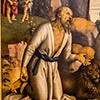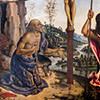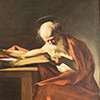
Madonna with the four saints (Hieronymus with the lion), Niccolò di Liberatore, Galleria d'Arte Antica, Palazzo Barberini

Saint Jerome on the throne, Giovanni Santi, Musei Vaticani

St. Jerome with baby Christ and St. John the Baptist in the background, Perugin's circle, Galleria Nazionale d'Arte Antica, Palazzo Barberini

Crucifixion with St. Jerome and St. Christopher, Galleria Borghese

Saint Jerome in Penitence, Museo nazionale di Castel Sant'Angelo
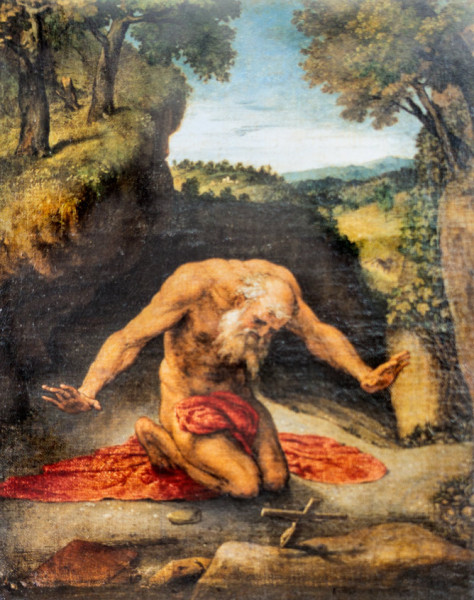
Saint Jerome adoring the crucifix, Lorenzo Lotto, Musei Vaticani

St. Jerome in the desert, Perugino, Galleria Colonna

Saint Jerome in Penitence, Tintoretto, Galleria Nazionale d'Arte Antica, Palazzo Barberini
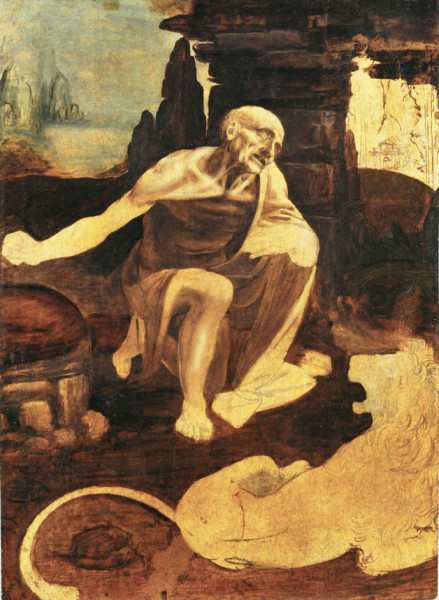
Saint Jerome in Penitence, Leonardo da Vinci, Musei Vaticani
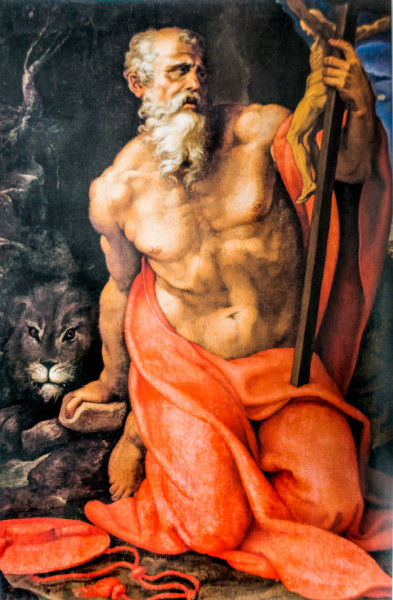
Saint Jerome, Girolamo Muziano, Musei Vaticani

Saint Jerome, Trophime Bigot, Galleria Nazionale d'Arte Antica, Palazzo Barberini

Saint Jerome reading, Caravaggio, Galleria Borghese

Saint Jerome, Leonello Spada, Galleria Nazionale d'Arte Antica

Saint Jerome, Guercino, Galleria Nazionale d'Arte Antica, Palazzo Barberini

Saint Jerome, Guido Reni, Musei Capitolini

Saint Jerome in Penitence, Federico Barocci, Galleria Borghese, pic. Wikipedia

Saint Jerome with the Trumpet of the Last Judgment, Jusepe de Ribera, Galleria Doria Pamphilj

Saint Jerome at work, Hendrick de Somer, Galleria Nazionale d'Arte Antica, Palazzo Barberini, pic. Wikipedia

Saint Jerome, Jusepe de Ribera, Galleria Spada

Last Communion of St. Jerome, Domenichino, Musei Vaticani, pic. Musei-Vaticani

One of the altar with the image of St. Jerome in the Church of San Girolamo dei Croati

Pietro Gagliardi, paintings showing the life of St. Jerome in the church San Girolamo dei Croati

Façade of the Church of San Girolamo dei Croati

Façade of the Church of San Girolamo della Carità

The interior of the Church of San Girolamo della Carità

Main altar in the Church of San Girolamo della Carità, copy of a painting by Domenichino

Saint Jerome, Venetian school, Galleria Nazionale d'Arte Antica, Palazzo Corsini

Saint Jerome, Jose de Ribera, Galleria Nazionale d'Arte Antica, Palazzo Corsini
We are familiar with this interpreter of the Bible mainly from images showing his old, rachitic body. However, behind the official façade of a hermit and erudite hides a man prone to conflicts and uncompromising, whose figure is willingly (today) recalled by those who, on one hand, want to show his misogyny, and on the other those who would like to prove that his attitude is the best evidence of valuing women in the late-antiquity Church. And where was the actual truth?































